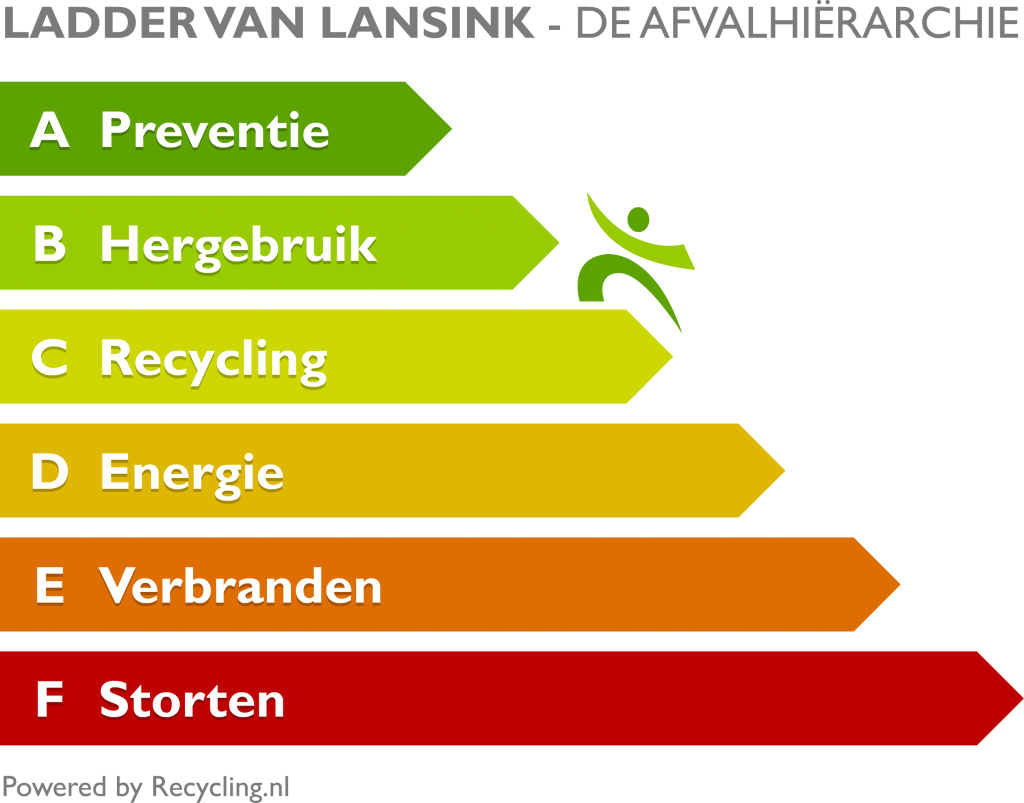Lansink’s Ladder
The Waste Hierarchy
Recycling: high on Lansink’s Ladder
“Lansink’s Ladder – The Waste Hierarchy” distinguishes three categories of dealing with waste. Prevention and reuse have the highest priority. Then recycling and high-quality energy recovery. The least preferred is incineration or landfill.
Cees Duijn: “Lansink’s Ladder is the starting point for InnoMax in all its thinking and doing for consultancy, developing, engineering and realizing new Environmental and Recycling technologies.”
A – Prevention: quantitative and qualitative prevention. The generation of waste is prevented or limited. In the manufacture of substances, preparations or other products, substances and materials are used that, after use of the product, cause no or minimal adverse effects on the environment.
B – Reuse: recovery through product reuse. Substances, preparations or other products are reused as such after use.
C – Recycling: recovery through material reuse
Substances and materials that make up a product are reused after using the product.
D – Energy: recovery as a fuel. Wastes are used with a main use as fuel or for another way of generating energy.
E – Burning: burning as a form of disposal. Wastes are removed by incineration in accordance with legal guidelines.
F – Landfill: Wastes are landfilled.
Source: recycling.nl
Origin Lansink’s Ladder
Ad Lansink: “Separation at source was preferable to separation afterwards. Reuse of products was better than recycling. After all, incineration with energy recovery was more sensible than dumping flammable material. Even better would be the prevention of waste.”
Source: www.adlansink.nl
 Book publication by Ad Lansink: Challenging Changes ‘Connecting Waste Hierarchy and Circular Economy’ (2017)
Book publication by Ad Lansink: Challenging Changes ‘Connecting Waste Hierarchy and Circular Economy’ (2017)

